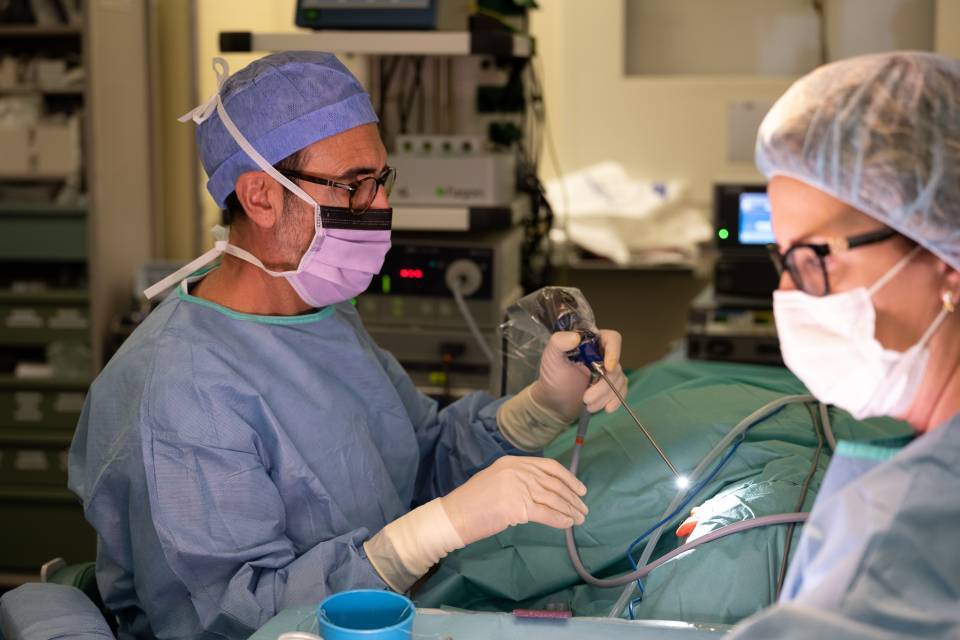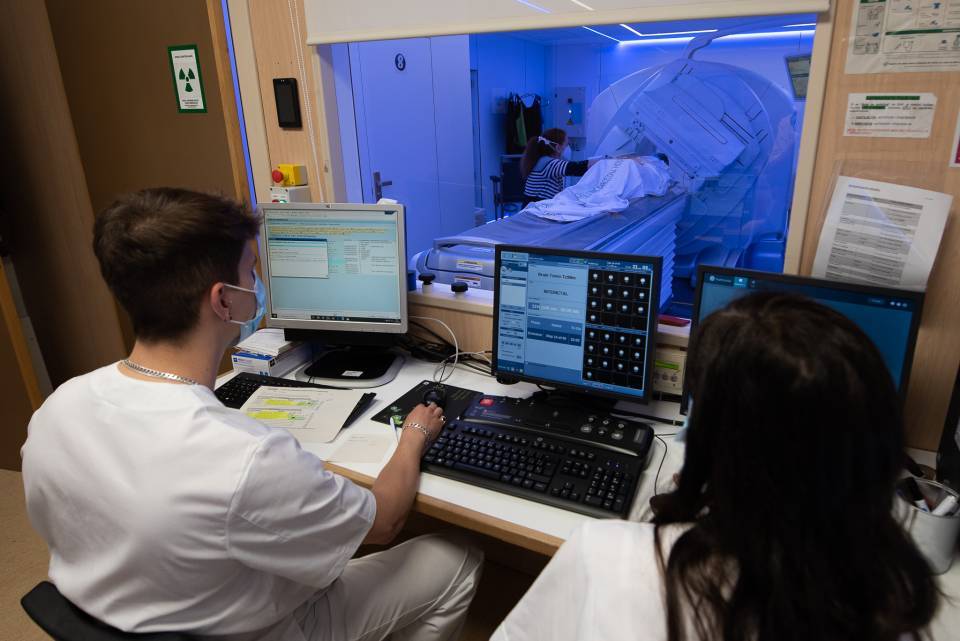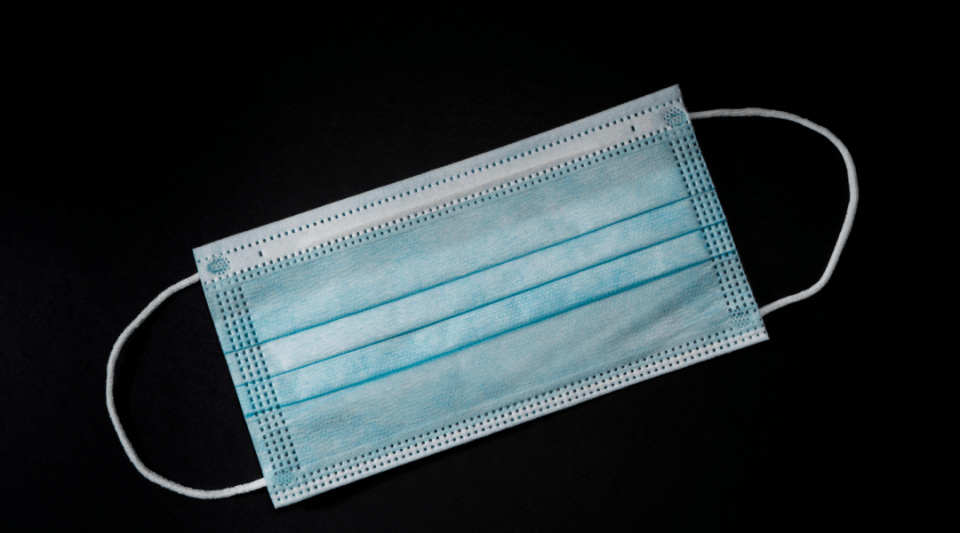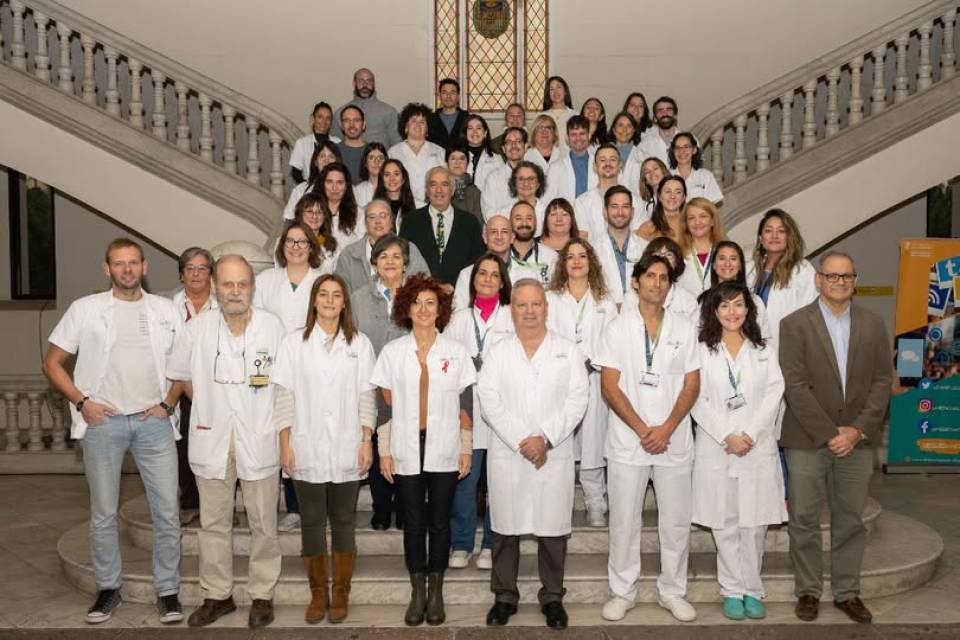The Hospital Clínic Barcelona is the first hospital in Spain to use endoscopic surgery to remove glomus tumours, a type of benign tumour of the middle ear that grows in the temporal bone of the skull, behind the eardrum. “The aim is to perform transcanal endoscopic surgery exclusively”, explains Dr. Francesc Larrosa, consultant in the Hospital Clínic Barcelona ENT Service, which forms part of the Hospital Clínic Institute of Medical and Surgical Specialties (Institut Clínic d’Especialitats Mèdiques i Quirúrgiques, ICEMEQ), headed by Dr. Josep Maria Segur. A study carried out at the Hospital Clínic and published in “The Journal of Laryngology - Otology”, shows that this minimally invasive technique is safe and effective in the removal of early-stage glomus tympanicum tumours.
The technique, which started to be used in June 2018, consists of using the natural corridor of the ear canal itself, avoiding incisions outside the ear and removing the tumour through the ear. To make this possible, technological support is required, such as endoscopy, and a lighting system that magnifies the middle ear and allows us to enter deeper than traditional microscopy. “In this way, we can dissect the tumour and extract it without having to remove any bone and destroying fewer structures during the procedure”, explains Dr. Larrosa. On the other hand, the operation requires the use of laser to coagulate the incision made. In this case, the type used is the Blue Laser, a very specific laser for avoiding bleeding, “which is very troublesome in this type of surgery, as there are very important structures such as the ossicular chain, the inner ear and the facial nerve, which we do not want to damage”.
To date, 10 cases have been treated at the Hospital Clínic Barcelona. Dr. Larrosa explains that this type of surgery “cannot be used with all glomus tumours we see - only with early-stage cases in which the tumour does not extend beyond the middle ear”. The main advantage of using the endoscopic technique, pioneered at the Hospital Clínic, is the patient’s rapid recovery. “People who live near the hospital can go home the same afternoon, and discomfort is minimal”, assures Dr. Larrosa.
Before using this technique, the operation was performed under microscopic vision and, in many cases, an incision had to be made behind the ear, involving a hospital stay of one or two days. Avoiding this incision has several advantages for patients, such as less postoperative pain, less aesthetic repercussions and preservation of the sensitivity of the auricle. In short, a better quality of life. Nowadays, it is major outpatient surgery, so patients can go home the same day. Although the length of the surgery may be longer compared to other surgical procedures, the hospital stay is considerably shorter, with an average of under 10 hours. “This is something we can do here, at state-of-the-art centres such as the Hospital Clínic”, concludes Dr. Larrosa.




